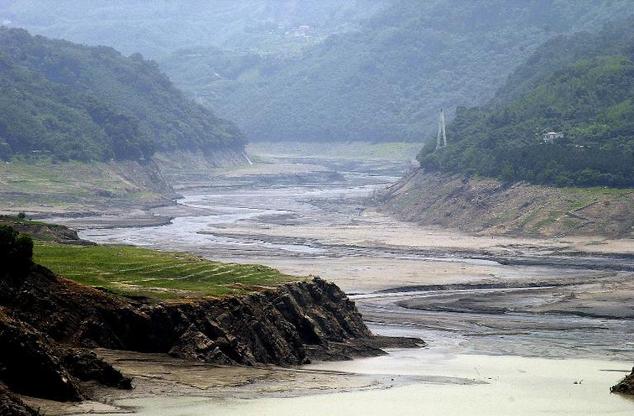Taiwan is currently facing their worst drought in 67 years, and high tech sectors like the integrated circuits (IC) industry are watching the situation carefully. Even though Taiwan receives an annual rainfall of 98 inches, 2.6 times the global average, they dedicate much of this water to the industry, leaving only 20% available as a resource. Ironically, this strategy has made Taiwan a water resource-poor region with a UN global ranking as the 18th driest place in the world. And unfortunately this year, the reservoirs are quickly running dry. This post explores the scope and impact of the water shortage on the IC industry and recommends supply chain risk mitigation strategies and approaches for downstream high tech OEMs and brand owners.
Taiwanese IC Industry
As the internet-of-everything takes hold, Taiwan is becoming an extremely important global supplier of the electronics needed for these devices. In the new millennium, Taiwan gained momentum in securing a leadership position in the microelectronics industry, and the country’s leader is projected to widen further in 2015 with a surge of up to 28.14 percent. [1]
One of their strategies to gain and maintain this market share was to make water available at very competitive rates, as water is key for the production of ICs. A typical IC foundry can use between 2 to 4 million gallons of ultra-purified water every day, which is equivalent to the water used by a city of 40 to 50 thousand. To make Taiwan an economically viable destination for IC foundries, Taiwan offered water at one-fifth the global average.
Water Woes
Most of the Taiwan watersheds receive their precipitation from typhoons and seasonal rainfalls. They typically receive over 98 inches of rainfall per year which is adequate for the country’s overall consumption; however, in 2015, a cold, dry band of air over the Pacific Ocean east of Taiwan kept rainfall to 65 inches last year for an all-time-low since 1947. With the third less rainfall, reservoirs are running dry making a regular supply to industry and households challenging.
As parts of their vast reservoirs dry up, the government is forced to implement stricter measures to conserve the existing water. In February this year, the Taiwanese government finalized a water-rationing plan: a four-phase national water contingency plan for the cities of New Taipei, Taoyuan, Hsinchu County, Hsinchu, Miaoli County, Taichung, northern Changhua County, Tainan, and Kaohsiung. These cities make up Taiwan’s high tech, industrial, and agricultural centers. Unfortunately, semiconductor manufacturing needs a continuous uninterrupted water supply, so any rationing could lead to supply chain interruptions in medical devices, automotive, industrial, defense, aerospace, and other users of ICs.
Potential Solutions
Risks imposed by the shortage in the water supply have been encouraging Taiwanese companies to invest in technological advancement that could minimize the use of water and incorporate dry processes to replace wet processes. Unfortunately, those take time and don’t help us mitigate the immediate risk of supply chain interruption.
For the immediate term, there are steps downstream OEMs and brand owners can take now to help mitigate your risk caused by the water shortage. Below are some ideas from the experts at Resilinc:
- Map: Determine which sites, products, parts, and materials derived from Taiwan and which may be impacted by the water shortage.
- Monitor: Create alerts for changes in the water plans as well as production rate reductions at plants.
- Communicate: Contact supplier(s) to discuss and agree on your replenishment program, and establish a collaborative planning process to combat the risk involved.
- Forecast: Increase the visibility of demand information across the global supply chain so that partners can plan for your demand.
- Strategize: Create a “What If” scenario to assess the potential business impact of the shortage on parts, materials, stock, production, resources, market, revenue etc.
- Identify: Develop potential mitigation options such as holding inventory and/or allocate production.
Solutions like Resilinc can also help you with your mitigation choices and actions. From mapping and monitoring your global supply chain so that you can quickly and intelligently develop mitigation actions, to monitoring capacity for supply and demand mismatch. Further, capabilities such as scenario and mitigation programs to help you plan and be proactive, no matter what the weather does.
[1] Media Tek, VIA, Realtek, Sunplus enlisted in the top 20 IC design companies are nestled in Taiwan. Major Micro-Electro-Mechanical Systems (MEMS) foundries including Asia Pacific Microsystems, Touch Microsystems, and UMC are based in Taiwan. Taiwan-based Advanced Semiconductor Engineering Inc (ASE), Siliconware Precision Industries (SPIL), and Tripod tech lead the IC packaging industry, while ASE Test and ChipMOS Technologies lead the IC testing industry. Media Tek, Nova Tek, MStar, Real Tek, and Himax are counted amongst major global fabless IC suppliers.
References:
http://www.forbes.com/sites/kevinomarah/2015/02/04/water-crisis-and-scenario-planning-for-business/
http://globalvoicesonline.org/2015/03/10/worst-drought-in-a-decade-hits-taiwan/
http://www.eetimes.com/document.asp?doc_id=1326328
http://www.latimes.com/world/asia/la-fg-taiwan-drought-20150510-story.html
http://www.taipeitimes.com/News/editorials/archives/2014/11/25/2003605232
http://www.amcham.com.tw/topics/2015/02/can-taiwan-solve-water-problem/





